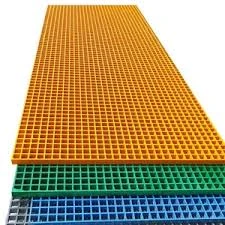
-
 Afrikaans
Afrikaans -
 Albanian
Albanian -
 Amharic
Amharic -
 Arabic
Arabic -
 Armenian
Armenian -
 Azerbaijani
Azerbaijani -
 Basque
Basque -
 Belarusian
Belarusian -
 Bengali
Bengali -
 Bosnian
Bosnian -
 Bulgarian
Bulgarian -
 Catalan
Catalan -
 Cebuano
Cebuano -
 China
China -
 China (Taiwan)
China (Taiwan) -
 Corsican
Corsican -
 Croatian
Croatian -
 Czech
Czech -
 Danish
Danish -
 Dutch
Dutch -
 English
English -
 Esperanto
Esperanto -
 Estonian
Estonian -
 Finnish
Finnish -
 French
French -
 Frisian
Frisian -
 Galician
Galician -
 Georgian
Georgian -
 German
German -
 Greek
Greek -
 Gujarati
Gujarati -
 Haitian Creole
Haitian Creole -
 hausa
hausa -
 hawaiian
hawaiian -
 Hebrew
Hebrew -
 Hindi
Hindi -
 Miao
Miao -
 Hungarian
Hungarian -
 Icelandic
Icelandic -
 igbo
igbo -
 Indonesian
Indonesian -
 irish
irish -
 Italian
Italian -
 Japanese
Japanese -
 Javanese
Javanese -
 Kannada
Kannada -
 kazakh
kazakh -
 Khmer
Khmer -
 Rwandese
Rwandese -
 Korean
Korean -
 Kurdish
Kurdish -
 Kyrgyz
Kyrgyz -
 Lao
Lao -
 Latin
Latin -
 Latvian
Latvian -
 Lithuanian
Lithuanian -
 Luxembourgish
Luxembourgish -
 Macedonian
Macedonian -
 Malgashi
Malgashi -
 Malay
Malay -
 Malayalam
Malayalam -
 Maltese
Maltese -
 Maori
Maori -
 Marathi
Marathi -
 Mongolian
Mongolian -
 Myanmar
Myanmar -
 Nepali
Nepali -
 Norwegian
Norwegian -
 Norwegian
Norwegian -
 Occitan
Occitan -
 Pashto
Pashto -
 Persian
Persian -
 Polish
Polish -
 Portuguese
Portuguese -
 Punjabi
Punjabi -
 Romanian
Romanian -
 Russian
Russian -
 Samoan
Samoan -
 Scottish Gaelic
Scottish Gaelic -
 Serbian
Serbian -
 Sesotho
Sesotho -
 Shona
Shona -
 Sindhi
Sindhi -
 Sinhala
Sinhala -
 Slovak
Slovak -
 Slovenian
Slovenian -
 Somali
Somali -
 Spanish
Spanish -
 Sundanese
Sundanese -
 Swahili
Swahili -
 Swedish
Swedish -
 Tagalog
Tagalog -
 Tajik
Tajik -
 Tamil
Tamil -
 Tatar
Tatar -
 Telugu
Telugu -
 Thai
Thai -
 Turkish
Turkish -
 Turkmen
Turkmen -
 Ukrainian
Ukrainian -
 Urdu
Urdu -
 Uighur
Uighur -
 Uzbek
Uzbek -
 Vietnamese
Vietnamese -
 Welsh
Welsh -
 Bantu
Bantu -
 Yiddish
Yiddish -
 Yoruba
Yoruba -
 Zulu
Zulu
fiberglass products for steel smelting plant
The Role of Fiberglass Products in Steel Smelting Plants
In the modern industrial landscape, steel smelting plants play a crucial role in supporting the infrastructure and technological advancements of societies worldwide. As the demand for steel continues to grow, so does the need for efficient, cost-effective, and sustainable materials in the operational processes. Among these materials, fiberglass products have emerged as indispensable tools in enhancing the efficiency and safety of steel smelting operations. This article explores the innovative applications of fiberglass in steel smelting plants, highlighting its benefits and potential for future advancements.
Understanding Fiberglass
Fiberglass, a composite material made from fine glass fibers, is known for its exceptional strength-to-weight ratio, corrosion resistance, and versatility. These qualities have made fiberglass a popular choice in various industries, including construction, automotive, aerospace, and manufacturing. In the context of steel smelting plants, fiberglass is particularly valued for its ability to withstand high temperatures and its durability in harsh environments.
Application of Fiberglass in Steel Smelting
1. Insulation One of the primary applications of fiberglass in steel smelting plants is thermal insulation. The high temperatures involved in smelting processes necessitate effective insulation materials to prevent heat loss and ensure energy efficiency. Fiberglass insulation reduces heat transfer, helping to maintain optimal temperatures within furnaces and other equipment. This not only maximizes energy usage but also contributes to cost savings in heating operations.
2. Refractory Linings Fiberglass products are also utilized in refractory linings within smelting furnaces. These linings are crucial for protecting the furnace structures from intense heat and corrosion caused by molten steel and slag. The lightweight nature of fiberglass makes it an excellent option for refractory systems, allowing for easier installation and maintenance while providing effective protection against extreme conditions.
fiberglass products for steel smelting plant

3. Structural Components The construction of steel smelting plants involves a wide range of structural components, many of which can benefit from the use of fiberglass. For instance, fiberglass-reinforced plastic (FRP) can be used for beams, columns, and platforms, providing strength and structural integrity with reduced weight. This not only facilitates easier handling and installation but also minimizes the overall energy consumption of the plant's structure.
4. Safety Equipment Safety is paramount in steel smelting operations, where the risk of accidents and exposure to hazardous materials is significant. Fiberglass products offer a solution in the form of safety equipment such as walkways, ladders, and railings. These products are resistant to corrosion and can withstand the harsh chemical environments typical of steel smelting plants, ensuring reliable safety features that protect workers and equipment alike.
5. Environmental Benefits Another critical aspect of utilizing fiberglass in steel smelting is its contribution to environmental sustainability. The lightweight properties of fiberglass can lead to reduced energy consumption during transportation and installation. Moreover, its durability means a longer lifespan for various components, reducing waste and the frequency of replacements. Additionally, fiberglass can be integrated into systems designed to minimize emissions and enhance the overall efficiency of smelting processes, aligning with global sustainability goals.
Future Prospects
As technology continues to evolve, the potential for fiberglass products in steel smelting plants is vast. Innovations in manufacturing processes are likely to yield even more advanced fiberglass composites with enhanced properties, offering improved performance in terms of thermal resistance and structural integrity. Research into more sustainable production methods for fiberglass itself may further bolster its role in environmentally responsible steel production.
Conclusion
Fiberglass products have established themselves as vital components in the operation and maintenance of steel smelting plants. Their characteristics—such as high-temperature resistance, corrosion resistance, and lightweight performance—make them essential for various applications, including insulation, safety equipment, and structural components. As the steel industry moves towards sustainability and efficiency, the role of fiberglass is expected to grow, driving innovations that enhance both operational effectiveness and environmental responsibility. By embracing these advanced materials, steel smelting plants can not only improve their productivity but also contribute positively to a sustainable industrial future.









